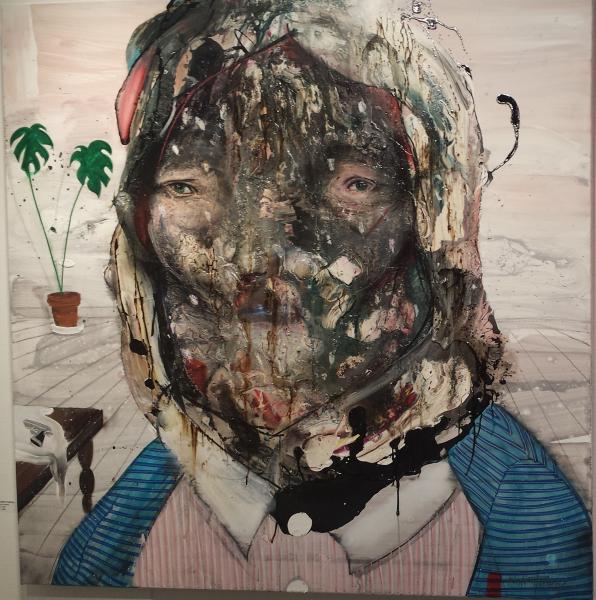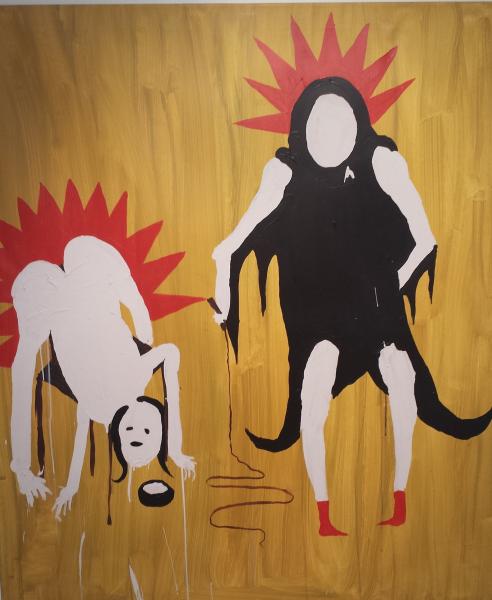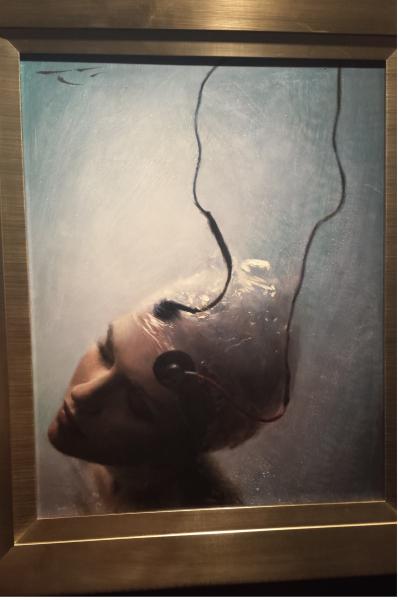
This year's Contemporary section was sharp and challenged social and political norms.
From colorful, anti-consumerist snark to simple spatial experimentation, the modern and contemporary art portion of this year’s L.A. Art Show demanded attention. Gallivanting art lovers enjoyed exhibits featuring budding newcomers and established masters, with galleries coming from Brazil, Tokyo, Beijing, Denmark, the Dominican Republic, and, of course, sweet cultured Los Angeles. Variability kept this section of the show alive and interesting. No, really though, exhibits of punctured Plexiglas and cardboard bled into exhibits of graffiti, and then on into collections of 1950’s expressionism.
And, standing in the middle of it all, David Jang’s “Subjectivity Value,” a makeshift hall of window blinds programmed to open and close at different intervals as observers walk through. Call it what you will. A playful light transformer, a poetic dance of everyday objects, a pretentious doohickey, a commentary on spying and secrecy—it was cool regardless.
Nearby, Arcadia Contemporary’s gallery featured several works by Casey Baugh of women wrapped in cellophane and interacting with glowing screens and wires in a bluish, sci-fi landscape. While the relationship between the figures and the technology looked romantic, the colors and plastic made the bodies feel exposed and uncomfortably ghostly. A similar effect was produced in their examples of Matthew Cornell’s work like “Last Summer,” picturing a modest, Midwest-looking suburb. At first idyllic, the houses took on a sinister mystery with their intense shadows. It was clear the painting didn’t want you to know what was going on inside.
Another highlight was Galerie Wolfsen, a Danish gallery showing off the work of Denmark’s young talent. Their exhibit included eye-catching examples of Frederik Næblerød’s comically violent style, and a gritty sculpture by Lars Calmar titled “Policewoman,” portraying an African American policewoman subduing a large, white thug.

Frederik's pieces are simple, but seem ready to jump from the canvas.
There was a lot to see. Whitestone Gallery from Tokyo had work by Kazuo Shiraga, which he created by swinging above the canvas on a rope and painting with his feet, fighting his way to art. Axiom had the cowboy works of wannabe cowboy Michael Gorman, portraying elongated, Don Quijote-like silhouettes herding dense layers of pink.
And who didn’t love Tony Cappellán’s “Caribbean Sea,” a sea of worn turquoise flip flops that mimic a tropical ocean? Each flip flop was restrung with barbed wire, pointing to a disconnect between the tourist’s ideal and the economic state of countries like the Dominican Republic.
Off to the far side of the collection, a giant statue of a businessman stood looking up. The piece was titled “Think Big.” It was clear the man portrayed in the sculpture had given up on thinking big, and had decided to become big instead, substituting imagination for size.The modern and contemporary section of this year’s art show didn’t fall into the same trap. The collections were many, but at no place did the galleries lose imagination or ambition. It was clear that creative subtlety was alive and well, even if the phrase “negative space” was perhaps used more often than desired.
Reach Staff Reporter Andre Gray here






